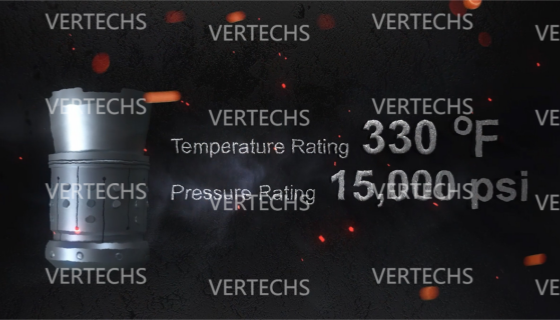


In the fast-paced world of oil and gas exploration, efficiency is not an added expense—it's a requirement. Amidst all the technologies. But just as with any high-tech drilling method, speed and accuracy of MPD system rig-up can dramatically affect the project's total time and budget. So how fast can you rig up your MPD system? The response is in preparation, equipment compatibility, crew training, and implementing smart monitoring technology.
When well executed, MPD drilling allows the operator to realize consistent wellbore pressure, enhancing safety and efficiency and minimizing non-productive time (NPT). Slow rig-up, however, can strip away these advantages. Quick mobilization and deployment are especially critical in offshore environments or in tight pressure window formations, where slippage can lead to greater operational risk.
Let's dissect the principal elements that decide how rapidly your MPD system can be put in motion.
1. Equipment Readiness and Standardization
Compatibility and modularity of your equipment are a principal driver of MPD rig-up speed. New Managed Pressure Drilling systems arrive pre-assembled in modular components or as plug-and-play units on site. They have been engineered to integrate as seamlessly as possible into existing rig infrastructure on land or offshore.
Prefabricated piping and skid-mounted equipment significantly reduce the installation time. Equipment such as the rotating control device (RCD), back-pressure pump, and choke manifold need to be rig-ready and pre-tested before they arrive on-site by operators.
2. Integration of Digital Fluid Monitoring System
No doubt, one of the best options to accelerate your MPD rig-up is by integrating an enhanced fluid monitoring system. These digital tools provide real-time insights into mud weight, flow rate, and pressure—critical parameters for any MPD operation.
By incorporating a fluid monitoring system into your MPD setup in real-time, you can significantly cut the time for calibration and testing that normally would be needed in rig-up. Not only do these systems improve accuracy, they also enable predictive maintenance, which will prevent delays in actual operations.
3. Crew Experience and Training
Even the best equipment will underperform without a trained crew. Rigging up an MPD system requires coordination across several disciplines: drilling engineers, rig personnel, MPD specialists, and safety personnel.
Pre-job training on MPD operations, including mock rig-up operations, is essential. It can cut deployment time by familiarizing the crew with equipment such as frac trees, MPD manifolds, and dissolvable frac plugs. With adequate training, an experienced crew will be able to rig up and test an MPD system in 24 to 36 hours—a quicker turnaround than typical practices.
4. Well Design and Pre-Planning
Good planning is also very important. All elements of the well design—casing, mud program, frac plug plan—must be compatible with MPD goals before the rig even reaches the location. For example, the use of dissolvable frac plugs eliminates the need for milling after fracturing, thus saving time in transitioning to the MPD phase.
Second, the understanding of the pressure behavior of the formation allows for a more effective MPD design. If the team already knows what the expected annular pressure profile should be, it is faster and more accurate to adjust the choke and other pressure control parameters.
5. Real-Time Communication and Data Sharing
Real-time data transfers between rig operations and remote locations help speed up decision processes during upfit setups. The system provides valuable information during debugging procedures and system performance analysis. Ordinary MPD systems that connect to remote diagnosis functions enable access before physical equipment installation.
Though speed is valuable, it must never be achieved at the expense of safety or operational integrity. On average, a well-trained MPD system can be rigged up in 1 to 3 days, depending on well complexity, equipment utilized, and crew experience. Cutting corners will result in misalignments, pressure imbalances, and even expensive downtime.
As experts in high-end Managed Pressure Drilling (MPD) solutions, Vertechs assists clients in addressing intricate drilling issues. We combine smart fluid monitoring systems and state-of-the-art technologies to provide safety, efficiency, and performance. Rely on us to maximize your well delivery with accuracy and reliability. Join forces with us today and transform your MPD operations!
Q1: What services does Vertechs provide in MPD?
We deliver end-to-end Managed Pressure Drilling (MPD) services, such as system design, equipment, and real-time service.
Q2: How does Vertechs enhance drilling efficiency?
Our MPD systems and fluid monitoring capabilities provide accurate pressure control, limiting downtime and maximizing safety.
Q3: Is offshore drilling capacity available from Vertechs?
Yes, we are experts at both onshore and offshore MPD applications using modular, rig-ready equipment and seasoned personnel.
Q4: What sets Vertechs apart from other MPD providers?
We blend cutting-edge technology with extensive field knowledge to provide dependable, tailored drilling solutions that meet your specifications.
Vertechs is committed to delivering innovative energy solutions that drive efficiency and sustainability. Our cutting-edge technologies and services are designed to meet the evolving needs of the energy industry. To learn more about how we can support your projects, please contact us, email us at engineering@vertechs.com, or connect with us on LinkedIn.
Read Our One More Blog(1): Vertechs' Commitment to Innovation in Managed Pressure Drilling
Read Our One More Blog(2): Importance of Fluid Monitoring in Modern Drilling for Efficiency